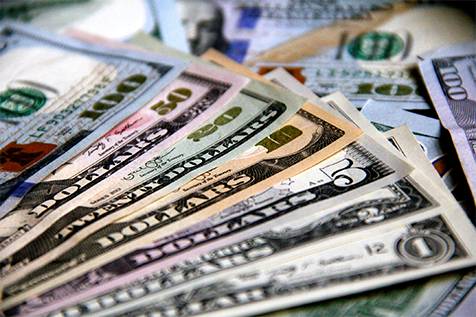The U.S. dollar rose on Monday as worried investors sought safe-haven assets, although limited moves suggest markets are still awaiting Iran’s response to U.S. strikes on its nuclear sites, which have heightened Middle East tensions.
Tehran: U.S. strikes expand list of legitimate targets
Iran said Monday that the American strikes on its nuclear sites had expanded the list of legitimate military targets. It also described President Donald Trump as a “gambler” for joining Israel’s military campaign against the Islamic Republic.
Big Moves in Oil Markets
Oil markets saw the most significant movement, with crude prices hitting five-month highs before retreating later in the day. The dollar rose 1% against the Japanese yen to 147.450, its highest since May 15.
Oil Prices and the Dollar-Yen Relationship
Bank of America analysts noted that the USD/JPY pair may reprice upward if oil prices remain high. They pointed out that Japan imports nearly all of its oil—over 90% of it from the Middle East—while the U.S. is relatively energy self-sufficient.
Euro, Pound, and Other Currencies
The euro performed slightly better, dropping just 0.2% to $1.14965, and remained flat after preliminary eurozone PMI data showed the region’s economy stalled for a second consecutive month in June.
Positive UK data had little effect on the British pound, which stood at $1.34385, down 0.1%. Meanwhile, the risk-sensitive Australian dollar hit a one-month low, falling 0.52% to $0.64180. The New Zealand dollar dropped 0.68% to $0.5926.
U.S. Dollar Index Rises Amid Market Uncertainty
The U.S. Dollar Index, which tracks the greenback against six major currencies, rose 0.15% to 99.065.
Carol Kong, a currency strategist at Commonwealth Bank of Australia, said the market is in “wait-and-see” mode regarding Iran’s response. She noted that the greater concern is the inflationary impact of the conflict rather than its economic toll.
“Currency markets are hostage to the statements and actions of Iran, Israel, and the U.S. The risks clearly lean toward safe-haven currencies if the conflict escalates,” she said.
Iran Threatens to Close Strait of Hormuz
Iran vowed to defend itself after the U.S. dropped 30,000-pound bunker-busting bombs on the mountain above its Fordow nuclear facility. U.S. leaders urged Tehran to stand down as anti-war protests erupted in some U.S. cities.
In a powerful threat to the West, Iran’s parliament approved a motion to close the Strait of Hormuz, through which roughly a quarter of global oil shipments pass. The strait lies between Iran, Oman, and the UAE.
Dollar Regains Safe-Haven Role Despite Yearly Decline
While the dollar has regained its role as a safe haven amid geopolitical risk, the relatively limited movement suggests cautious investor behavior.
The dollar has declined 8.6% this year against major currencies due to economic uncertainty sparked by Trump’s trade policies and concerns over U.S. growth, pushing investors toward alternatives.
Markets Await Powell’s Testimony
Attention is also turning to Fed Chair Jerome Powell’s semiannual testimony to Congress.
George Vessey, chief currency strategist at Convera, said, “Amid sharp political division, Powell is expected to stress the Fed’s independence and reiterate that any rate decisions will be entirely data-dependent.”
Bond Market Tells a Different Safe-Haven Story
Despite escalating geopolitical tensions, the U.S. bond market—a key safe-haven indicator—has shown an unusually muted response.
Typically, global crises push investors toward U.S. sovereign debt, but Danske Bank’s Kundby Nielsen believes the bond reaction is unclear due to trade deficits, tariffs, and the likelihood of increased bond supply from expansionary fiscal policy.
Global Trade War Adds to Financial Risk
Financial risk is also rising amid the global trade war. With the July 9 deadline marking the end of the temporary tariff exemption, the U.S. is threatening to impose tariffs of up to 50% on most imports from the European Union.
Without the War, the Dollar Would Have Continued Falling
Thierry Wizman and Gareth Berry, strategists at Macquarie Bank, wrote in a June 20 client note—prior to the U.S. strikes on Iran—that the dollar would likely have declined further without the conflict.
They cited unfavorable U.S. tariff news and relatively resilient data outside the U.S. as reasons for anticipated weakness.
Heavy Bets Against the Dollar
Bank of America strategists also noted that investors are heavily positioned for a weaker dollar, adding momentum to any downside moves.
According to the bank’s June 16 survey of global fund managers, short dollar positions were the third most crowded trade—though the poll was conducted before the U.S. intervention in the Middle East conflict.


